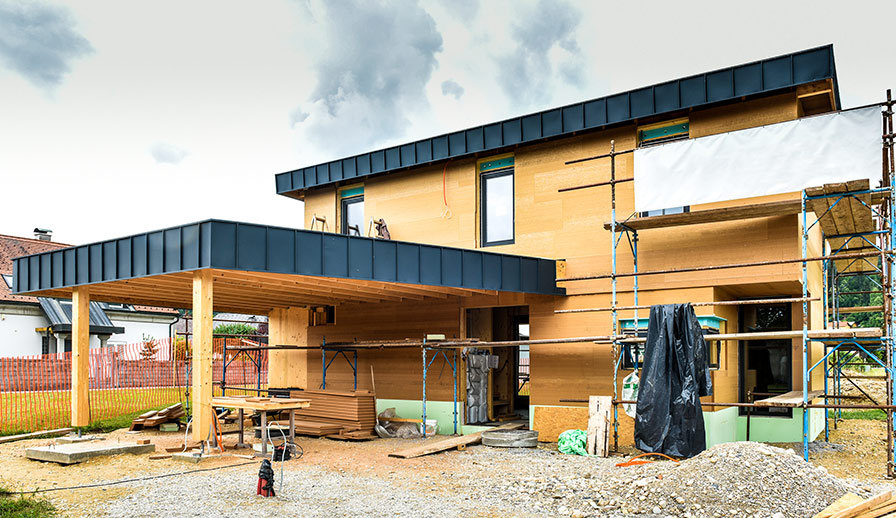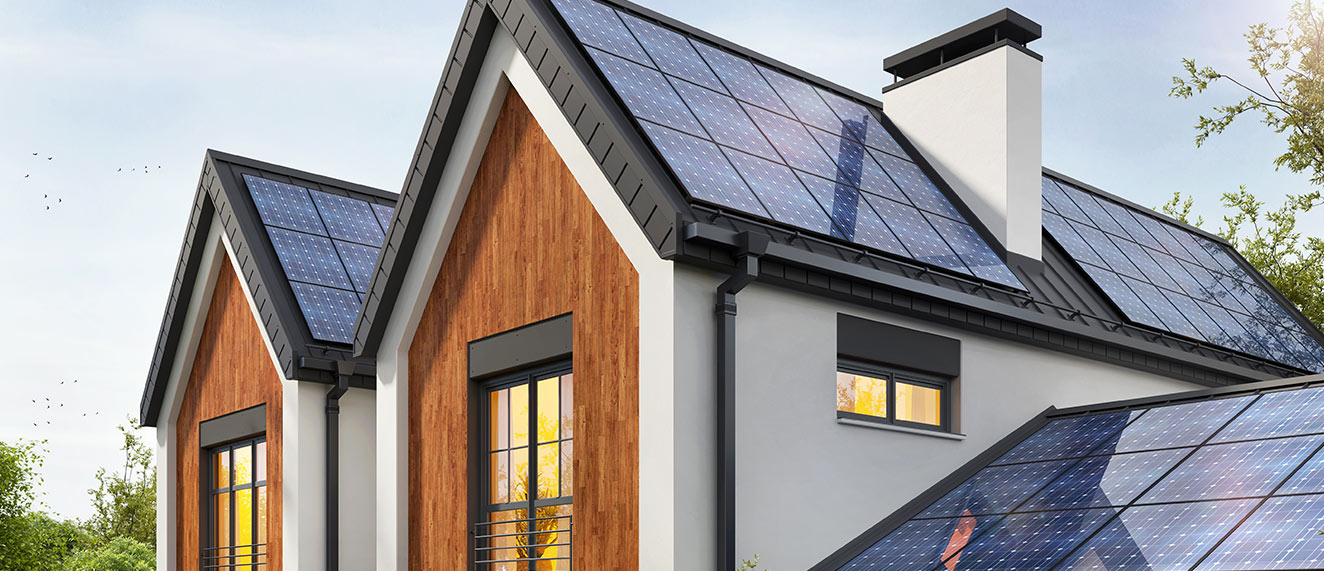The past year has been tumultuous for REALTORS® with all eyes on the COVID-19 pandemic. Many public concerns, including energy and the environment, were set aside to deal with the global health crisis.
Now that the economy is starting to ramp up again and the real estate market is booming, green initiatives in government and the private sector are getting back on track.
As we celebrate Earth Day on April 22, it’s a good time to consider if REALTORS® and builders are eagerly facing the impact of the “greening” on the real estate industry. Or are they less interested given that the pandemic is still not in our rearview mirror?
We must look to both the past and the future to see where the greening of real estate is headed and how it may influence the industry, particularly new builds.
“With economist Mark Carney and Bill Gates and all global capital markets responding to what they call climate crisis and clean tech opportunities, people at all levels of the real estate market are more aware than ever that climate change and energy are part of the future of the real estate market,” says Toronto-based salesperson and REALTOR® Chris Chopik, who’s an expert on real estate and the environment.
Listen to Chopik discuss positioning energy efficient homes and features to home buyers as well as reducing your own environmental footprint on our podcast, REAL TIME.
Real estate markets across Canada are very busy, as buyers hope to take advantage of low interest rates and sellers see the chance to leverage their properties into new opportunities.
Green means high-performance housing for the right buyer

Chopik likens houses that are built with the environment and energy in mind to the same forward-thinking design expressed in high-performance vehicles such as the Tesla models. They typically attract a knowledgeable buyer who wants the bar set high in terms of quality, style, durability and even potential return on investment.
Even so, there remain significant barriers to REALTORS® marketing these high-performance houses well, says Chopik.
“There is definitely a knowledge barrier among real estate professionals, and that’s about understanding what it is they are selling, how to look at it and how to market it well,” he says, noting there’s a resistance from some in the real estate industry about representing the value of energy performance.
He believes there’s also a generational chasm between younger and older REALTORS®.
“Some REALTORS® are stuck in a belief system that is based in the past, whereas younger millennial REALTORS® see caring about energy and the environment as a core value proposition within this marketplace,” says Chopik.
Whether climate change is being marketed as a belief or a stone-cold fact, it’s still moving the needle in the marketplace.
“Statistically, 45% of today’s marketplace are millennials, and even if they are using mom and dad’s money to buy, they are making the buy decisions and they care about climate change,” says Chopik. “But there are still a lot of what I’ll call real estate dinosaurs who take the world view that this doesn’t matter. Well, they are missing the opportunity to reach these buyers.”
The demand for energy-efficiency based features is going mainstream as green features that were previously considered niche move to the forefront.
Increasingly, people want quality in terms of comfort, high-performance housing and access to nature, says Chopik. He foresees governments creating new policies that will help spark more interest, more builds and more buys of energy-efficient homes.
“The future of real estate is delivering quality of life,” he says.
Getting a grip on the new green wave

So how can REALTORS® bring themselves up to speed with the potentially seismic changes afoot? Education, for starters.
“If you have solar panels on your roof and I’m selling your home, as the agent it’s on me to know how to sell that feature well,” says Chopik. “You need to learn how to tell the story well and it begins with listening to what clients want and advocating for what they have.”
Chopik recommends exploring these resources:
- The National Association of Realtors (NAR) Green Designation course, which he teaches in Canada. It’s designed for agents who want to learn more about energy efficiency and sustainability in real estate.
- Online Home Sustainability courses which have been “Canadianized,” says Chopik. They provide you with the building blocks of learning about sustainable, high-performance homes.
- The CREA’ Learning Hub helps REALTORS® looking to expand their knowledge and skills in products and services. The hub also features a number of professional development courses and specialty courses.
What constitutes an energy-efficient home?

It depends on one’s frame of reference, values and beliefs, says builder Chris Weissflog of EcoEnergy in Kemptville, Ont.
There are already programs for measuring or labelling efficiency in homes, he says, including: Energy Star; R2000; Net Zero Energy; and Passive House. You can find additional information in CREA’s Homeowner’s Guide to Energy Efficiency.
What’s known as a “passive house” is remarkably energy efficient and comfortable. Hallmarks of its efficiency can include low energy consumption, excellent indoor air quality with high-quality ventilation that also reduces smells, protection against outside sounds, and superb thermal comfort. It can save the owner money in the long run, as well as reduce or stop the emitting of carbon.
There are a variety of things that developers and builders can do when it comes to increasing energy efficiency. Looking to the future, just as with cars, there is a focus on all-electric.
All-electric homes, says Weissflog, do not require connection to more than one utility, reducing costs for delivery charges, specifically natural gas delivery costs.
With an extremely efficient all-electric home, it’s much less costly for a grid-tied solar electric photovoltaic (PV) system to offset the home and a family’s electric vehicle (EV) energy requirements.
“Having an energy system that has carbon emissions is actually more expensive,” he says.
How can builders work with REALTORS® toward green housing?

As the agents and consultants for home buyers, REALTORS® should make themselves more familiar with the range of offerings by builders in the green building sector, says Weissflog. Investigate what makes their offerings distinct, such as:
- Do they work to a formula and are they good at keeping costs down while still delivering performance?
- Are they low- or high-volume builders?
- Do they focus on using environmentally sound materials?
- What can of indoor air quality they can deliver?
He suggests REALTORS® can learn more about passive homes in their region of Canada by reaching out to their local practitioner. Passive Buildings Canada (PBC) is a good place to start. A REALTOR® can find a local practitioner via the PBC member’s list, reach out, ask questions, and find out what is going on in their region.
What the marketplace will demand in the future

Heat pumps will be very important, particularly cold-climate heat pumps that are coming into their own and are probably the biggest, new technology tool to providing carbon-neutral heating in our homes, says Weissflog.
William Murray of Construction Rocket in the Eastern Townships in Quebec says the greening of Canadian homes is coming and it will eventually be sanctioned by changes in the Canadian building codes.
“It’s tough to say exactly when, but I believe there is a real push to make it happen sooner rather than later,” he says. “Everyone is becoming a bit more aware of the urgency to tackle climate change.”






In 52 years of selling real estate I have seen only one home for sale with solar panels. No builders in my area of Sarnia are building spec homes with solar panels. Natural gas is beating hydro handily in cost. There is something missing here. Cost. Hydro heated homes went out of favour in the 1980’s for the same reason. Cost
But the cost equation is different again due to two factors:
1- air source heat pumps (air conditioners that can also run in reverse and heat the house) offer 250% efficiency (no type-o) vs natural gas furnaces that run at 85% efficiency or electric resistance heating at 100% efficiency.
2- carbon taxes will double the cost of natural gas by 2030.
Air source heat pumps are sold by most HVAC companies and are installed in houses across Canada. They didn’t used to run well in cold climates, but that has changed.
52 years ago, solar photovoltaics was not one of the two cheapest sources of electricity on the planet, that only happened in the last 5 years. So the past may not be a good indicator of the future. In Edmonton, building a net zero home allows us to eliminate the need for natural gas, saving clients about $600 in fixed natural gas line costs alone (i. e. not counting natural gas energy costs). This is more than the annual cost of electricity we would pay for heating, if that electrical energy cost weren’t also offset by the solar modules. So our clients have no gas bill, and no electrical energy bill, only electrical fixed fees and portions of the the distribution and transmission costs.
Norm, you ask about costs. I have a few notes for.
When you have a very efficient home the cost to heat it (colder climate, near Ottawa) with a heat pump may be $200 to $300 per year. If you are also heating your DHW with a heat pump water heater with an energy factor of 3.5, that means that you’re maybe paying about $100/year for two people and maybe double for four. Cooling the house is very small, since your heat pump water heater is removing heat from the indoor air and providing a dehumidification benefit to heat the water. All together, the electrical cost might be $200 + $100 + $50 ($350) for space heating, cooling and DHW for a house for two people, up to $300 + $200 + $100 = $600 for a larger house with four people. Real example: an all-electric Passive House (two adults, 940 sqft per each of two floors) used under $1,200 of Hydro for a complete year, and that includes a workshop with tools turning from time to time. That house did not have PV (solar) on it making electricity: just grid-powered.
With NG (natural gas) you would be paying very little for the fuel, but probably about $300/year just for the delivery charges which aren’t pro-rated on volume. Even if the NG could deliver the same cost per unit of heat as a heat pump, your total cost for the energy alone could at best be the same, but you would have the delivery costs on top of that; so at least a $300 more expensive option. An NG option is also carbon-intensive, and subject to carbon taxation, which will grow considerably over time. Further, the cost of solar is dropping all the time and you cannot make NG to offset your consumption, but you can certainly be net zero for electricity; and very easily with a small’ish system if your house is very energy efficient (Passive House).
Last few notes of colour (note: my house is net zero with a net metering system):
• My February Hydro bill was 400% higher than my January bill. It was $24 and change.
• My March Hydro bill indicates that when I got to the end of my annual cycle, my account was zeroed out with me losing $280 in generation credits (Hydro started a new accounting year). Lots of reasons why the excess: more sunshine, less people in the house using DHW, less heat (good passive solar gain), less driving (we have an EV). But, if this surplus keeps up I’ll feel compelled to drive more often, or get a second EV and ditch the gas car.
• With the EV we typically get about 6km/kwh in the summer and 5 in the winter. I built my own PV system, so my amortized cost of generated electricity might be about $0.08/kWh. So my car costs between 1 and 2 cents per kilometer in fuel. My Honda Civic costs about 12 to 14 cents per kilometer at $1.25/litre. And the EV costs much less for maintenance. I can’t make my own gasoline, and my PV system will not be taxed for carbon, so the cost of running my car isn’t going up anytime soon. And did I mention how nice it is to NEVER have to drive to a gas station?
Sorry to rattle on, but where’s the downside?